The North Aegean islands? They’re a whole different world compared to Greece’s famous tourist magnets. On my recent trip through this lesser-known corner of the country, I stumbled into a wild mix of ancient volcanic landscapes and medieval villages that feel frozen in time.
These remote islands blend raw, rugged beauty with traditions that go back centuries. Honestly, it’s about as authentic as Greek island life gets—far from the crowds you’ll find in Santorini or Mykonos.
My adventure took me to three islands, each with its own quirks and hidden gems. There’s something magic about hiking through petrified forests, then wandering cobblestone streets that haven’t changed since Byzantine times.

I’ll show you volcanic wonders that shaped these islands, medieval villages where time just stands still, and coastlines so peaceful you’ll wonder if you’ve stepped into a postcard.
Island Hopping in the North Aegean: Setting Out on a Unique Greek Holiday
The North Aegean islands really shake up the usual Greek holiday routine. Instead of endless crowds, you’ll find volcanic terrain, genuine local culture, and way fewer tourists than the southern hotspots.
What Makes the North Aegean Islands Distinct from Other Greek Destinations
These islands stand apart from the famous Cyclades and Dodecanese. Most people rush to Santorini and Mykonos, but these northern gems? They keep things raw and real, with true Greek culture.
Lesvos is Greece’s third-largest island. I wandered through olive groves, dipped into hot springs, and got lost in petrified forests. The island’s ouzo and olive oil are legendary.
Lemnos is all about volcanic landscapes and long, sandy beaches. Tourism barely touched it for decades, so prices stay fair and locals stick to old ways of life.
Chios gave the world mastic—a resin you’ll only find here. The island’s medieval villages and unique architecture, with traces of Genoese and Ottoman influence, caught my eye.
You won’t see the usual white-washed buildings here. Instead, stone houses, Byzantine castles, and fishing villages untouched by time dot the landscape.
The scenery jumps from volcanic rocks to lush plains, and it’s never boring.
Navigating the Aegean Sea: Essential Tips for Island Hopping
Hopping between North Aegean islands takes a bit more planning than the southern routes. I found that Mytilene on Lesvos works as the main ferry hub.
Ferry schedules shift with the seasons. Summer brings daily crossings, but in winter, you might only see two or three a week.
I always check the latest timetables before setting out.
Main ferry routes I used:
- Piraeus to Mytilene (10-12 hours)
- Mytilene to Chios (3 hours)
- Lemnos to Lesvos (4 hours)

I relied on Ferryscanner to compare schedules and prices. Ferries cost less than flights, but they can eat up your day. In peak season, I’d book accommodation ahead—just in case.
Small airports on Lesvos, Chios, and Lemnos connect straight to Athens. Flying is quicker but costs more, and flight schedules can be hit or miss.
Escaping Mass Tourism: Finding Authentic Greek Experiences
Mass tourism hasn’t really found its way to the North Aegean. That means you get real cultural exchanges with locals, not just staged hospitality.
I sat in tavernas eating fresh sardines on Lesvos, seasoned with local herbs. On Chios, I tried mastiha desserts—seriously, nothing else tastes quite like them.
Village festivals pop up all summer. Locals and visitors dance, share food, and enjoy music together. You never feel like an outsider.
Some authentic experiences I loved:
- Olive oil tastings at family farms
- Pottery workshops in old villages
- Setting out on fishing trips with locals
- Hiking through wild, untouched landscapes
Most places to stay are family-run guesthouses or restored stone homes. Owners often speak a few languages and love sharing tips. Prices? Still reasonable, especially compared to the big-name islands.
Life moves slower here. I found myself soaking up local customs and tasting new foods, making memories that stick with you long after you leave.
Volcanic Wonders and Natural Treasures: Landscapes That Shape the Islands
The North Aegean islands wear their volcanic roots on their sleeves. You’ll see it in the jagged rocks, bubbling hot springs, and ancient forests frozen in stone.
These natural wonders tell stories millions of years old.
Exploring Volcanic Landscapes and Geothermal Phenomena
The volcanic history of these islands really surprised me. On Limnos, I wandered through landscapes sculpted by eruptions—strange rock formations line the coast.
I hiked over dark, mineral-rich soil, feeling like the ground itself whispered stories of fire and change.
Some volcanic features I stumbled on:
- Black sand beaches glittering with volcanic glass
- Cliffs carved by ancient lava flows
- Twisted rock formations that almost don’t look real
- Steam vents breathing warm air from deep below
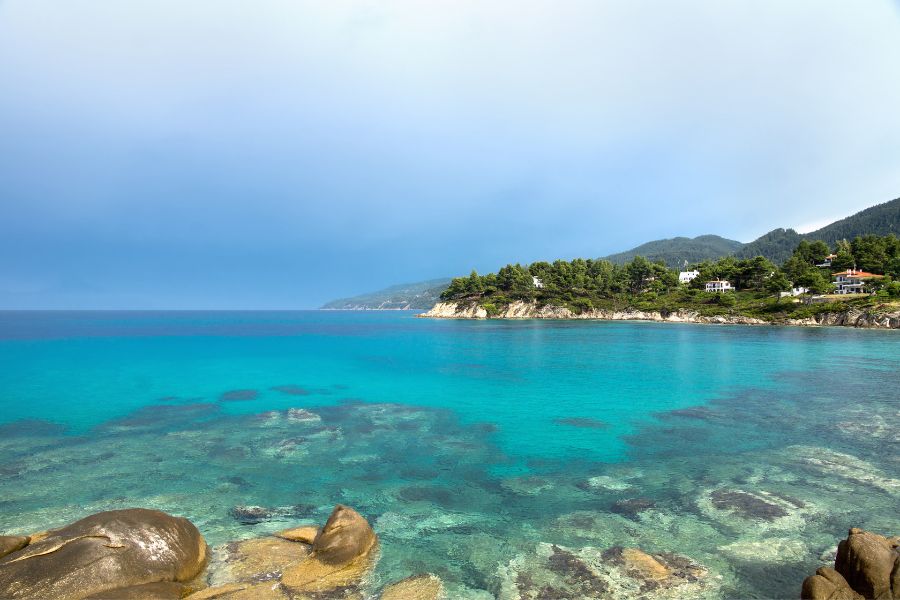
You can still feel the geothermal energy. Warmth seeps through cracks, and sometimes, the air carries a faint sulfur tang.
Every formation I passed seemed to have its own tale, shaped by underground forces pushing upward.
Hot Springs: Nature’s Therapy in Ikaria and Beyond
Ikaria’s hot springs quickly became my favorite escape. The island’s geothermal waters have drawn people for centuries, all hoping for a bit of healing magic.
I spent afternoons soaking in water that bubbles up at 45-58°C, heated by volcanic energy deep below.
A few hot spring spots worth seeking out:
- Therma Beach, where springs flow right into the sea
- Apollon springs with proper facilities
- Remote coastal springs you’ll only find if you hike
The mineral content is wild—sulfur, radon, and other elements that locals swear help with sore joints and skin issues.
I met islanders who treat the springs like their local spa. They let me in on the best times to visit and how long to soak.
It’s all tied to Ikaria’s volcanic heart. The underground heat warms the water as it winds through rock, finally surfacing in these pools.
The Petrified Forest of Lesvos: A Prehistoric Marvel
Lesvos hides one of the world’s most important petrified forests. This 20-million-year-old site preserves trees that turned to stone after volcanic ash buried them.
I wandered among ancient trunks that once stood over 20 meters tall. The eruptions that covered them created perfect conditions for fossilization.
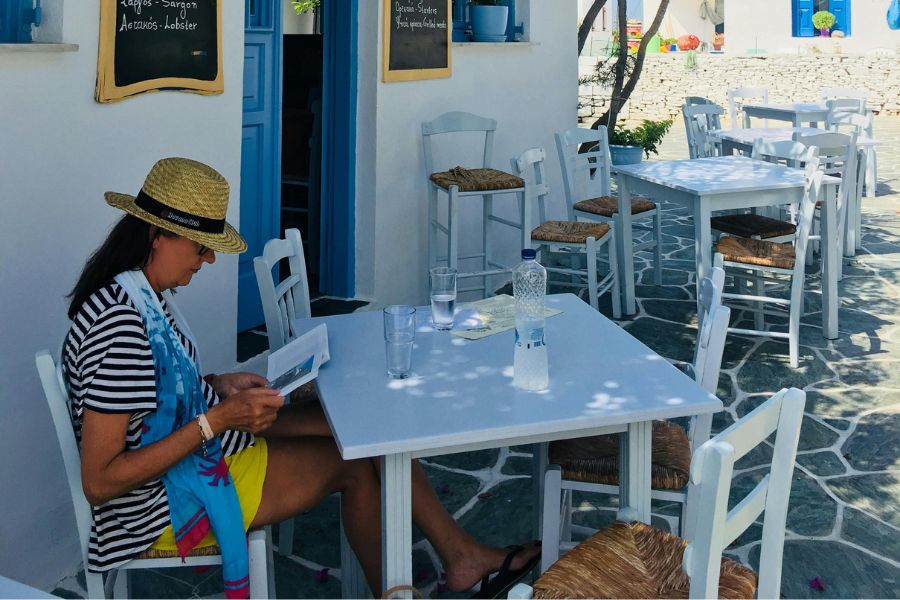
The process is fascinating—volcanic silica slowly replaced the wood, but left the grain and structure intact.
Why this forest stands out:
- Whole root systems left undisturbed
- Leaves and fruit fossilized alongside trunks
- Multiple layers showing different eras
- Species from palms to conifers
Volcanic ash did all the work, burying the trees fast enough to stop decay while minerals gradually seeped in.
The forest spreads across western Lesvos, and each area reveals a different side of this ancient ecosystem.
Medieval Villages and Timeless Traditions: The Heartbeat of the North Aegean
Step into the medieval villages of the North Aegean and you’ll feel the weight of centuries. Mastic production in Chios carries on as it always has, and local crafts still thrive in the villages of Lesvos and Samos.
Mesta and the Mastic Villages of Chios
Mesta blew me away—it’s one of the best-preserved medieval villages I’ve ever seen. Only two routes lead in or out, and the houses form a kind of living fortress.
The walls connect, and a central tower rises above the maze of alleyways.
What makes Mesta special:
- Stone houses with winding, narrow lanes
- The Church of Palio Taxiarhi with incredible wood carvings
- Local tavernas pouring souma, a drink made from figs
Mesta is part of Chios’ mastic villages. Mastic production here earned UNESCO recognition, and locals still use methods passed down for generations.
The resin only comes from trees on this island. Watching families harvest it is like stepping back in time.
Pyrgi caught my eye with its xysta—black-and-white geometric patterns covering the buildings.
Charming Villages of Lesvos and Samos
Lesvos is dotted with mountain villages full of character. Eressos, shaped by old volcanic activity, feels remote but beautiful.
Olive groves and pine forests blanket the hills.
Villages here keep their stone architecture, and families still fish and farm the way their grandparents did.

Samos villages? They mix Venetian and Ottoman styles. Mountain settlements offer cool breezes and the scent of pine, while coastal villages focus on fishing traditions that haven’t faded.
Local Products and Traditional Crafts
Mastic is the North Aegean’s trademark. I watched farmers carefully cut tree bark to collect the resin.
Chios specialties:
- Mastic gum and oil
- Ceramics from Armolia
- Village wines
- Loukoumades (honey-soaked fritters)
Armolia’s ceramics are a treat—artisans shape and paint pots, mugs, and jugs by hand.
Lesvos is famous for olive oil and ouzo. Many workshops still make them the old-fashioned way.
Woodcarving lives on in villages across the islands. I saw craftsmen turning out church decorations and furniture, their skills passed down for generations.
Coastal Escapes: Beaches, Coves, and Seaside Life
The North Aegean islands serve up some of Greece’s most varied coastal scenes. You’ll find sandy beaches, hidden rocky coves, and everything in between.
Every island has its own take on seaside life, whether you’re after water sports or just want a quiet swim.
Best Beaches Across the North Aegean Islands
Samos won me over with its pebble beaches. Potami beach, tucked under looming mountains, is a favorite. The water is impossibly clear—ideal for swimming.
Megalo and Mikro Seitani on Samos are worth the short hike. These beaches offer crystal waters and dramatic backdrops.
Limnos has endless sandy beaches. Plathiena stretches for miles, with soft golden sand and shallow waters perfect for families.
Keros beach is wilder, with strong winds that draw windsurfers and kitesurfers from all over.
Lesbos mixes it up with different coastal vibes. Skala Eressos combines a long sandy stretch with a lively village. Taverns line the shore, making it easy to linger all day.
Hidden Coves and Quiet Shores Away from the Crowds
My favorite finds were off the beaten path. On Chios, I stumbled across tiny coves near Mesta where I had the place to myself. The snorkeling here is top-notch.
Ikaria hides small beaches along its southern coast. Seychelles beach (Nas) sits in a rocky bay, and natural hot springs bubble up nearby.
If you hit popular beaches early—say, before 9 AM—you’ll often have them to yourself. Even busy places like Kokkari on Samos are peaceful at dawn.
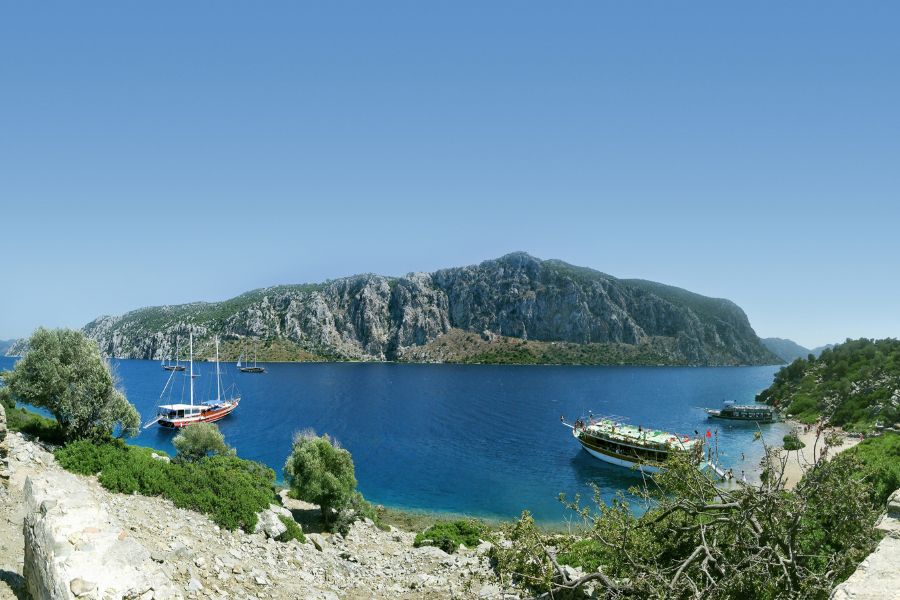
The north shores of Thasos hide untouched pebble beaches. Paradise beach really lives up to the name, with emerald water and marble-white stones. The 20-minute walk keeps most people away.
Seaside Activities from Swimming to Snorkeling
Swimming conditions change from island to island. Limnos’ volcanic coastlines make for fascinating underwater exploring. The sea stays warm from May to October.
Snorkeling is best around rocky shores. Chios, with its caves and rock formations, offers great visibility and marine life.
Water sports thrive where the wind picks up. Limnos’ northern beaches attract windsurfers, and you can rent gear in most coastal towns.
Fishing from the shore is a relaxing way to spend an evening. Taverna owners are usually happy to point you to the best spots for sea bream or mullet.
Beach walks can turn up unexpected treasures. I found volcanic stones on Limnos and even ancient pottery shards on remote Lesbos beaches.
History and Adventure: Ancient Ruins, Hiking, and Outdoor Exploration
Wandering through the North Aegean islands, I found myself peeling back layers of ancient history—often with nothing but the sound of my own footsteps for company. Every island seemed to hide its own stash of archaeological wonders and wild trails, just waiting for someone curious enough to explore.
Ancient Ruins and Archaeological Sites
Some of Greece’s most intriguing ruins are tucked away on these lesser-known islands. On Samothrace, I stumbled across the Sanctuary of the Great Gods, the birthplace of the iconic Winged Victory statue.
The ruins sprawl across terraced hillsides, and honestly, I lost track of time wandering through the old temples and half-forgotten halls. The place felt almost enchanted—definitely quieter than the mainland’s big-name sites.
Thassos surprised me with two standout archaeological stops. The Ancient Agora sits right in the heart of the modern town, its marble columns still standing proud. It’s easy to picture ancient traders haggling over olives or wine.
Kastro, perched high above the island, took a bit of a climb but wow, the views! The theater carved right into the hillside caught my eye, and the stone walls and old foundations stretch across the mountaintop like a forgotten city.
On Chios, I wandered through Nea Moni Monastery, a Byzantine gem packed with dazzling mosaics. The medieval architecture whispered stories from centuries back.
Hiking Trails Through Wild Landscapes
I didn’t expect the hiking to be this good, but every island delivered. Samothrace’s Mount Saos challenged me with steep, rocky trails winding through thick forests.
I trekked to waterfalls tucked away in lush valleys. The climbs got tough, but the trails were clear and well-marked. Splashing my face in the cold mountain streams felt like a reward after the heat.
Thassos’s Potamia Valley felt like a step back in time. I followed ancient stone paths past old watermills and olive groves, with the sound of streams bubbling under stone bridges.
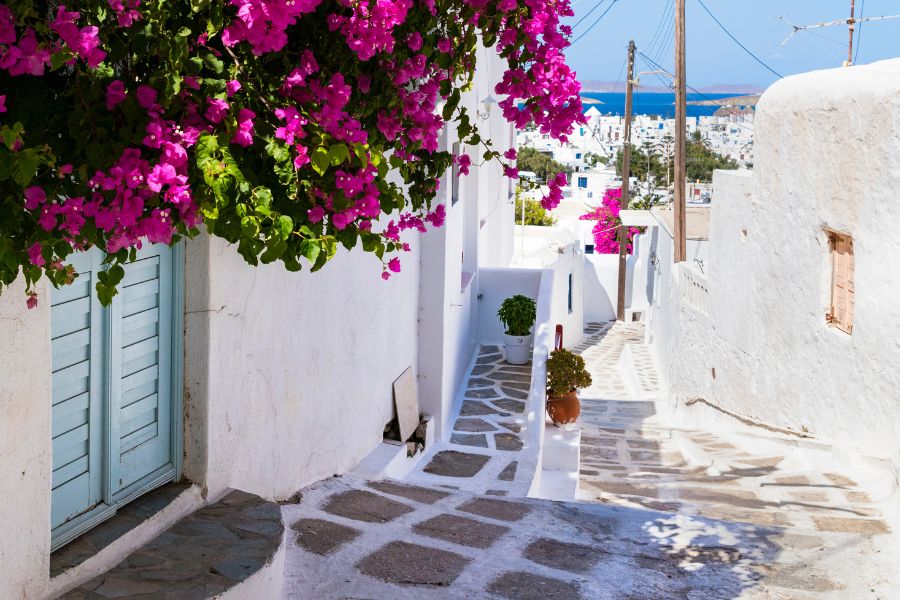
Some of those old mill wheels still turn, creaking slowly in the current. I could have spent days just meandering these quiet mountain paths.
Lesvos drew me in with birdwatching hikes through the Kalloni Salt Pans. The flat paths made for easy walks, and I spotted so many migrating birds I lost count.
Island Adventures: From Waterfalls to Mountain Treks
My outdoor adventures didn’t stop with hiking. On Ikaria, I found Therma’s hot springs after a walk along dramatic cliffs.
The mineral-rich pools bubbled right at the edge of the sea. I soaked in the warm water, watching the waves crash against black volcanic rocks.
Thassos had something special too—Giola, a natural rock pool perched at the cliff’s edge. It took a 20-minute hike to get there, but the swim in that crystal-clear water was worth every step.
I also grabbed a kayak and explored sea caves along the coast. Stumbling upon hidden beaches—only reachable by boat or a long trek—quickly became my favorite kind of discovery.
Some adventure activities I couldn’t resist:
- Rock climbing on volcanic cliffs
- Swimming in secret mountain pools
- Snorkeling through underwater caves
- Camping out under a sky full of stars
Every island threw a new challenge my way. One day I’d scramble up ancient fortress walls, the next I’d rappel down a waterfall or squeeze through a gorge carved by winter storms.
Beyond the North Aegean: Linking Journeys to Neighboring Islands
The North Aegean islands make a great springboard for exploring more of Greece. Ferries connect these northern gems to the Dodecanese and the Cyclades, so if you’re itching for a longer adventure, it’s totally doable.
Connecting to the Dodecanese: Leros and More
From Samos, I found direct ferries to the Dodecanese. The ride to Leros took around three hours and ran several times a week in summer.
Leros opened up more of the Dodecanese for me. I could hop to Patmos in just half an hour from there.
Useful Dodecanese connections:
- Samos to Leros: 3 hours
- Leros to Patmos: 30 minutes
- Leros to Kos: 2 hours
- Leros to Rhodes: 4-5 hours
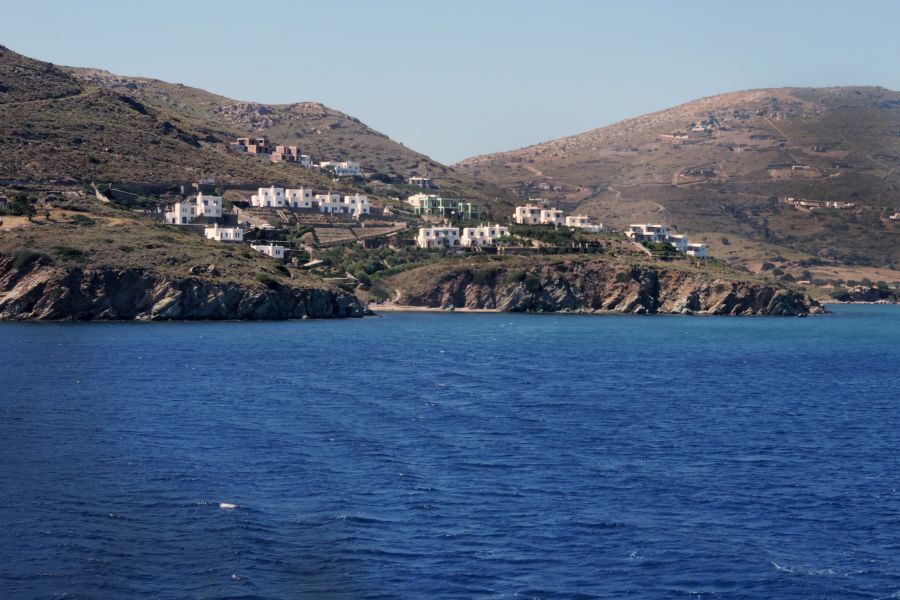
Rhodes stands out as the main ferry hub in the Dodecanese. From there, I could branch out to smaller islands like Symi.
Kos is another handy connection point, with regular ferries to Turkey and other Dodecanese spots.
Links to Cycladic Icons: Mykonos, Kea, Milos, and Santorini
Getting from the North Aegean to the Cyclades took a bit of planning. I learned that Syros acts as the main hub for Cycladic ferries.
I took a ferry from Samos to Syros, which took about 4-5 hours. From there, the whole Cyclades network opened up.
Popular Cycladic routes from the North Aegean:
- Syros to Mykonos: 1 hour
- Syros to Santorini: 3-4 hours
- Syros to Milos: 2-3 hours
Mykonos worked out as a solid connection point too, especially in summer. Some direct ferries even run between Mykonos and the North Aegean islands.
Santorini links up with Ikaria a couple of times a week in peak season—usually July and August.
Kea and Milos take a bit longer to reach, usually with a change at Syros or another Cycladic island. I found the trip could take anywhere from 6 to 8 hours.
Day Trips and Regional Ferry Routes
Some North Aegean islands make great bases for day trips. Samos, for example, has daily ferries to Kusadasi on the Turkish coast.
Chios connects easily to Psara, a tiny island perfect for a quiet day away. The ferry ride is only 90 minutes.
Regional day trip options:
- Samos to Turkey: 1.5 hours
- Chios to Psara: 90 minutes
- Lesvos to Turkish ports: 2 hours
- Inter-North Aegean connections: 2-4 hours
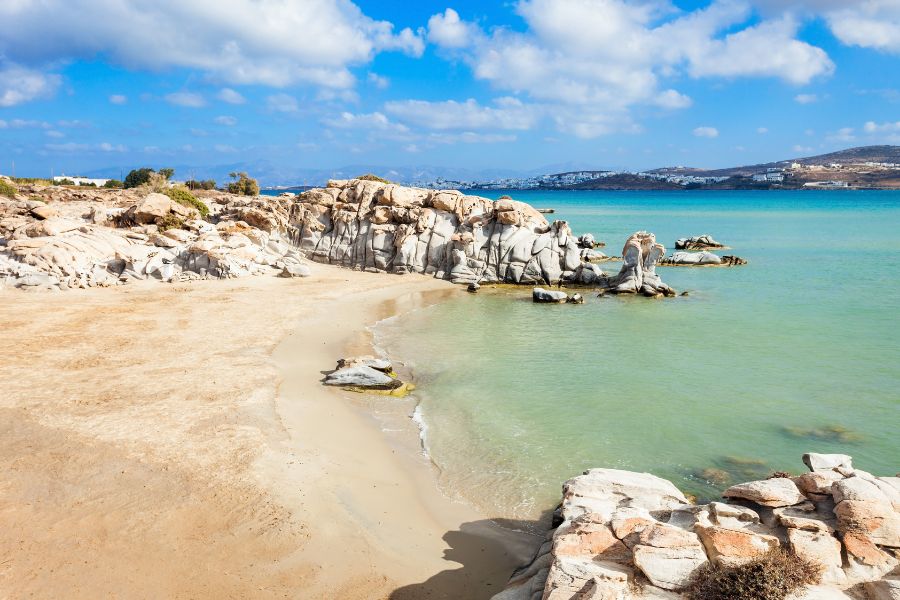
I always opted for high-speed ferries when I could—they shaved 30-40% off travel times.
Booking ferry tickets ahead of time became a must, especially in July and August. The most popular routes, like those to Mykonos and Santorini, fill up fast.
Local travel agencies on each island made multi-island planning so much easier. They always seemed to know the latest schedules and the best ways to connect the dots.
Frequently Asked Questions
Planning a North Aegean island trip takes a bit of strategy, especially with ferries and shifting schedules. Most travelers spend 5-14 days exploring these remote islands, and summer’s definitely the best time for weather and connections.
What is the best way to plan a 14-day Greek island-hopping adventure?
If you’ve got 14 days, start in Athens and fly to a big North Aegean island like Samos or Lesvos. That sets you up with solid ferry links.
Spend 3-4 days on your first island soaking up beaches and village life. Then jump to places like Ikaria or Chios for another few days each.
In the middle of your trip, check out smaller islands like Fournoi, Psara, or Oinousses. One or two days per island is plenty—they’re quiet, authentic, and blissfully crowd-free.
Wrap it up with a couple of days on Thassos or Samothrace if you’re craving mountain hikes and northern vibes. Definitely book your stays ahead for July and August.
Can you suggest a 10-day itinerary for exploring the Greek islands?
For 10 days, I’d focus on three main islands with a couple of day trips. Start with Samos for four days, and don’t skip a side trip to Fournoi.
Head to Ikaria next for three days—its wild beaches like Seychelles and Nas are unreal. If you time it right, join one of the summer “panigiria” festivals.
Finish with three days in Chios to see the mastic villages and black volcanic beaches. You can easily slip over to Oinousses or Psara for a day from there.
This route works because the ferries line up well in summer. I flew into Samos and out of Chios to save time and avoid backtracking.
How can one maximize their experience in a 7-day island-hopping trip to the North Aegean?
With just a week, pick two main islands and maybe a tiny one for a day. Samos and Ikaria make a perfect pair, with a quick 1.5-hour ferry between them.
Spend three days in Samos, exploring Pythagorion Village and hiking the Tunnel of Eupalinos. Tsamadou Beach is a must with its clear blue water.
Give Ikaria three days too—beach hop to Seychelles and Nas, and if you’re there in summer, join a panigiri for some real local fun.
Save your last day for Fournoi, which you can reach by small boat from either Samos or Ikaria. Fournoi’s beaches are peaceful and rarely crowded.
What are te must-visit islands for a 5-day Greek island tour?
If you have five days, use Samos as your home base and take day trips. Samos has its own airport and great ferry links, which keeps things simple.
Spend two days on Samos itself—don’t miss the Heraion temple ruins and Lemonakia Beach for that turquoise water.
Take a day trip to Fournoi for a swim at Kassidi Beach and a stroll past the old windmills in Kambi village. The ferry ride is about an hour each way.
Use another day for a quick trip to Ikaria and Seychelles Beach, hands down one of the best in Greece. Head back to Samos for your last night before flying out.
What are the top tips for starting an island-hopping journey from Athens?
Book your ferry tickets early, especially for summer when things get packed. The trip from Piraeus to most North Aegean islands can take anywhere from six to twelve hours.
If you’re short on time (or patience), flying is worth the splurge. Samos, Chios, Ikaria, Lemnos, and Lesvos all have regular flights from Athens.
Pack light—you’ll thank yourself when you’re hopping on and off ferries. Bring sunscreen and sturdy shoes, since some of the best beaches require a hike.
Download ferry schedules before you go; they change with the seasons. Some smaller islands have limited connections, so planning ahead will save you some headaches.
How can travelers structure a 6-day itinerary for the Greek islands?
When I planned my 6-day North Aegean adventure, I wanted a mix of big and small islands. So, I kicked things off with 2 days in Chios. Wandering through the famous mastic villages was a highlight, and honestly, Mavra Volia beach blew me away with its black pebbles.
Next, I hopped over to Lesvos for another 2 days. I loved exploring traditional villages—each one had its own charm. Sampling local ouzo felt like a must, and the island’s medieval architecture? Some of the best I’ve seen in the region.
For the last leg, I split my time between tiny Psara and the journey back. Psara’s tranquility is on another level. Despite its size, the island holds deep Greek history that you can really feel as you walk around.
Ferries made the route easy, with regular connections from Chios to Lesvos. Smaller boats run between Chios and Psara. I’d definitely recommend booking your accommodation early—these islands don’t have a ton of hotel choices, and the good spots fill up fast.

